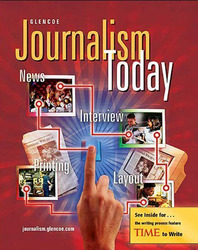
Journalism TodayChapter 5: Making the Interview WorkOverviewThe interview is the oldest and most common journalistic technique for gathering information. Chapter 5 deals with the ground rules for successful interviews—the kinds of questions to ask and not to ask, the general procedures to follow, and the rules of interview courtesy. A basic principle in interviewing is to go to the primary source, the person who has the best and most reliable information about a topic. Preparation for an interview often requires background research on the subject of the interview and the issues involved. During the interview, questions that can be answered with a simple yes or no should be avoided. An important guideline is to ask open-ended questions that will lead to interesting, quotable answers. If the questions are superficial, the answers will be too. An effective interview story contains specific details about the person who was interviewed and many direct quotations. One story technique—what journalists call the “Q and A” —reproduces the reporter’s exact questions and the source’s exact answers. Instead of a story in the usual sense, the Q and A presents virtually a verbatim transcript of the interview. At one time, prepublication checking was considered an intrusion into the right of journalists to decide what to print. More and more journalists, however, are now reading back stories to their interview sources before the stories are printed. |  |















